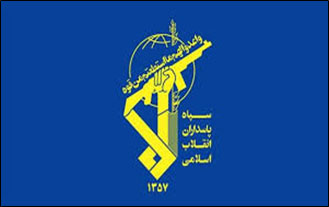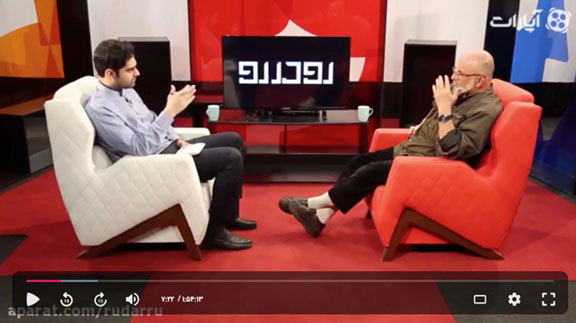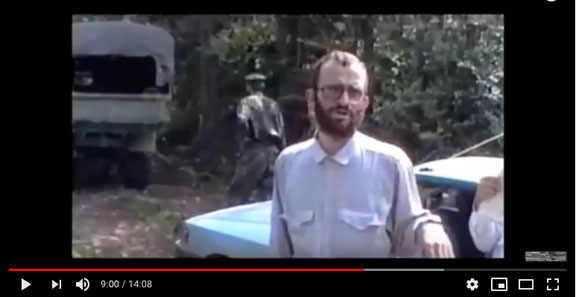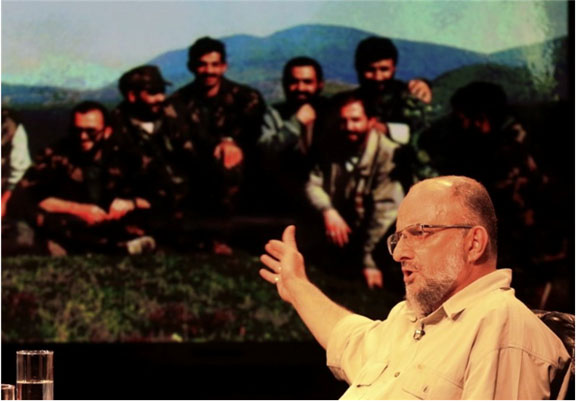IRGC (Sepah) and Hezbollah Strategic Note No. 1: Ex-IRGC General Details Iranian Influence in Bosnian War and Early Ties to al-Qaeda
Alma Keshavarz

IRGC (Sepah)
A former Islamic Revolutionary Guards Corps (IRGC) General, Saeed Ghasemi has, as early as 2015, revealed Iran’s involvement in the Bosnian War. While not much has been written about the topic nor has Ghasemi penned articles, there are videos of him on Iranian-state news outlets discussing Iran’s involvement. In the latest interview from 2019, Ghasemi reveals details of the Guards relationship with al-Qaeda.
Key Information: Rudarrru-21 Saeed Ghasemi, az huzoor dar bosni-e ta zelzeleh Kermanshah, (Rudarru-21 Saeed Ghasemi, from presence in Bosnia to the earthquake in Kermanshah),” Aparat, 14 April 2019, https://www.aparat.com/v/I1hOS:
Translation of Farsi interview discussing Bosnia:
Sabeti: Talk about Bosnia, if you can.
Ghasemi: It stated when Hossein Allahkaram (Ansar e-Hezbollah leader) came to my home one day and asked for a few pictures and some identification. It was to go into Bosnia under diplomatic cover. After he left, my wife came in and said “so he comes here to ask the angel of death to be a diplomat?” She knew.
…
Sabeti: In what capacity were you there [Bosnia]?
Ghasemi: We were there as members of the Red Crescent, but we were really there to train Bosnian Muslims. In Bosnia, in the heart of Europe, so many things were happening. Mujahadeen from all over the world came to fight alongside us. We were fighting side-by-side with al-Qaeda. Sepah gave al-Qaeda headbands, uniforms, flags that were made to look like they were Sepah, and they all wore badges. What’s happening in Yemen now, we did it first in Bosnia. It was CNN’s spy, Christiane Amanpour, our fellow compatriot that all of our leaders like to give interviews to, that blew our cover and some of us had to leave. It was all her fault. Somehow, she caught wind of what we were up to and that was it…Anyways, it was the Iranian government’s responsibility to give all of the fighter’s money and weapons and training.

Amir Hossein Sabeti (Left) /Saeed Ghasemi (Right)
Key Information: “Ex-general says IRGC was in Bosnia disguised as aid workers,” VOA News, 17 April 2019, https://www.voanews.com/a/ex-general-says-irgc-was-in-bosnia-disguised-as-aid-workers/4880301.html:
“In an interview with the state-approved internet channel, Aparat, Qassemi (Ghasemi) maintained on April 14 that he had visited Bosnia in the 1990s to train Bosnian Muslim fighters against the Serbs while wearing the Iranian Red Crescent uniform.”
“’In Bosnia, in the heart of Europe, there were many developments. We were side by side with al-Qaida. The members of al-Qaida learned from us. From all over the world, mujahedeen poured into Bosnia, and there was a new development. Muslim jihadi units were established,’” Qassemi maintained.”
Key Information: “Iran IRIB Ofogh Haj Saeed Ghasemi Iran’s Support of the Bosnian People at Bosnian War P1-4,” YouTube, 30 September 2015, https://www.youtube.com/watch?v=P2j1J2xtKKw:
Translation of Farsi interview discussing Bosnia:
Nader Talebzadeh (Interviewer): Let’s talk about Bosnia because Iran’s role was the most important role during that time in 1992. Iranians answered the call of all Muslims of the world. We both were witnesses of the event and were involved. Many Muslim countries answered the call. The difference is that some brought figs while others brought fighters. Tonight—well, a few years ago we discussed this topic but many new facts have been brought to light. The fact of the matter is that Iran was really the one that entered the war at the most important time. In a small city, called Goražde, to this day, it is the only city in Bosnia that wasn’t damaged or broken and still has the greatest sense of pride than any other Bosnian city. Who helped them? Iran. Where is Iran’s name said in its history? Nowhere. Today, Iran’s name is nowhere. Israel’s flag is first, America’s flag is second. We did things at the time that we have to now talk about. You are one of our greatest witnesses and we have footage from Bosnia today, which we’ll start to show now.
…
Talebzadeh: So, talk about Goražde. Where were you, can you refer to the map? What was the distance to Zenica and where did you go from there?
Ghasemi: Well, it’s about five to six thousand kilometers in distance. We felt the pain and heartache of Muslims who were at the center of Europe. I can tell you, Mr. Talebzadeh, that in 1991, 1992 the first socialist break was with Gorbachev. Imam Khomeini has previously written about socialism and communism and the plight of Muslims in these places and really understood the break that was coming.
In 1992—well, it was already two to three months in by the time we entered. But then we entered to help. Anyways, we entered, but could not go to Sarajevo because by the time we went in, the city had already experienced a 360 degree turn in events so we weren’t able to go into Sarajevo. So, we went back to a city called Visoko and we got stuck there, but fought a number of battles there and in surrounding areas.
Talebzadeh: If cut 10 is available to play, please play it. Let’s watch this together.
Ghasemi (from video): This area that you are seeing is called Golobrade. It’s a strategic location because it is at the center of two cities that we can get to with ease. No one can tell we are here on this side.
Talebzadeh: So, explain what we just saw [in the video].
Ghasemi: If you show the map in the background…we entered the city of Mostar. Many incidents occurred here and as a result, the fighters had to turn back and relocate to another area. We went towards Visoko in order to get to Sarajevo. We hit many roadblocks along the way, but we eventually managed to get to central Sarajevo, which is important because it’s not only a central area but also near an airport. After one or two weeks, we had to go up for Trnovo and further north, through lots of forestry and harsh weather to get to Goražde. People were impressed and uplifted that we were able to make this journey.
Bosnians love Iran. They consider us friends but feel a lot of pressure from Europe. Yet, they know that we are still their friends.

Saeed Ghasemi in Bosnia discussing strategy at their location in the video
Key Information: “Anche Amrika dar jang Bosni-e be dast nayavard dar sol-e Dayton mogegh shod (What America did not achieve in the Bosnian war was Dayton Peace),” Tasnim News Agency, 26 September 2015, https://www.tasnimnews.com/fa/news/1394/07/04/871280/آنچه-آمریکا-در-جنگ-بوسنی-به-دست-نیاورد-در-صلح-دایتون-محقق-شد:

General Saeed Ghasemi (Far Left) in Bosnia with Islamic Revolutionary Guard Corps (IRGC) Members
Strategic Analysis
Ghasemi has been giving interviews as early as 2015 about Iran’s involvement in Bosnia in the early 1990’s. The September 2015 interview mentioned above is one example. During that interview, Ghasemi was careful not to give away any key details of Iran’s activity in Bosnia. Rather, he offered generic insight, such as geographic location and the day-to-day lives of both Bosnian Muslims and the fighters helping them. As seen in the video, which was broadcasted on Iran’s state-run television channel Ofogh, the report provides raw footage of the Bosnian War and follows Ghasemi and his team in the conflict zone.
Ghasemi is an outspoken critic of the Islamic Republic’s current president Rouhani as well as past presidents. He is affiliated with the ultraconservative group, Ansar-e Hezbollah (Defenders of the Party of God), which is viewed as a vigilante group filled with religious zealots. The majority of the group is composed of Iran-Iraq War veterans, like Ghasemi, with deeply rooted religious views of society and politics. In May 2018, U.S. Treasury Office of Foreign Assets Control (OFAC) designated the group for human rights abuses in Iran. According to the designation, Ansar-e Hezbollah “has been involved in the violent suppression of Iranian citizens and has collaborated with the Basij to violently attack Iranian students with knives, tear gas, and electric batons.”[1] Ghasemi’s link to Ansar-e Hezbollah is well known. He indicated in the 14 April 2019 interview with Iranian internet channel Aparat that Hossein Allahkaram came to his home and asked for photos and identification to enter Bosnia under diplomatic cover.[2] While Allahkaram is still the leader of the group, Ghasemi has maintained the relationship at arm’s length. He is known to frequently make public speeches before large crowds and interviews on state-run news outlets. Keeping in line with Ansar-e Hezbollah’s philosophy, Ghasemi criticizes Iran’s presidents and other politicians who do not share the group’s radical conservatism.
Ghasemi has avoided speaking about Iran’s apparent assistance to al-Qaeda in past interviews. He acknowledges that other “mujahedeen fighters from all over the world” came to fight for Bosnian Muslims, but it was al-Qaeda’s presence in the country and Iran’s support that has since sparked an interest. Ghasemi divulged in his Aparat interview that, “We were fighting side-by-side with al-Qaeda. Sepah (IRGC) gave al-Qaeda headbands, uniforms, flags that were made to look like they were Sepah, and they all wore badges.”[3] According to the interview, Ghasemi is implying that al-Qaeda fighters in Bosnia were given uniforms and other wearable materiel that resembled IRGC and they could be identified as such.
This early assistance to the Sunni al-Qaeda should not come as a surprise. Shia Iran is known to support all Muslims around the world. IRGC uniforms were not the only Iranian association present in Bosnia; Ghasemi admits that his presence in the country was working under diplomatic cover, which meant wearing Iranian Red Crescent Society (IRCS) insignia to move freely. Iranian support for Bosnian Muslims was known even prior to Ghasemi’s interviews. As he refers to now Chief International Anchor at CNN, Christiane Amanpour, she mentioned the possibility of Iranian influence in Bosnia during the war when she was a correspondent at the network. On 16 November 1994, Amanpour reported, “Islamic countries, such as Iran and others, have been pouring money in to Bosnia’s Muslims. Some sources say they use humanitarian aid as a cover for cultural and religious indoctrination.”[4] This appears to be what Ghasemi is referring to in his interview, that she had sources that “outted them” in the country and led to their departure as they could no longer act under cover. Iranian Red Crescent Society (IRCS) uniforms were used to operate in Bosnia under diplomatic cover and Ghasemi infers that Amanpour had a source that provided her this information.
Since the April interview, the IRCS has denied Ghasemi’s claims about Bosnia and have said that they are suing him for his remarks. Ghasemi has double-downed on his remarks in a Twitter post: “We have seen with our own eyes they wore UN uniforms to spy on nations that did not fight and left their leashes to Westerners. I am now surprised that they are criticizing us for wearing IRCS uniforms to rescue the oppressed.”[5] With Ghasemi’s confirmation through a series of interviews and speeches that he and other Iranians used IRCS uniforms in Bosnia, it is important to note the potential violations of international law. Specifically, two potential violations of International Humanitarian Law (IHL), which are “Improper Use of Distinctive Emblems of the Geneva Conventions” (wearing or displaying ICRC emblems—including Iranian Red Crescent Society indicia), and “Perfidy:”
1) Improper Use of Distinctive Emblems of the Geneva Conventions is a violation of Customary IHL Rule 59 which states that improper use of the distinctive emblems of the Geneva Convention is prohibited. This prohibition is considered an international norm applicable in both international and non-international armed conflicts. In addition to being a violation of IHL, this is also proscribed by the Rome Statute for the International Criminal Court making it a violation of International Criminal Law (ICL) for states party to the Rome Statute or in jurisdictions party to the Rome Statute (ICC Statute, Article 8(2)(b)(vii). The Rome Statute considers it a war crime when serious injury or death results from the improper use the distinctive emblems of the Geneva Conventions. The distinctive emblems are the Red Cross, Red Crescent, and the Red Crystal. The Red Lion and Sun is also recognized but not currently in use.[7]
2) Perfidy is a violation of customary international law applicable in both international and non-international armed conflicts. Perfidy is addressed in Customary IHL Rule 65. Perfidy is defined as “acts inviting the confidence of an adversary to lead him to believe that he is entitled to, or obliged to accord, protection under the rules of international law applicable in armed conflict, with intent to betray that confidence.” (Additional Protocol I, Article 37(1). This definition is also codified in International Criminal Law (ICL) in the Rome Statute for the International Criminal Court for states party to the Rome Statute or in jurisdictions party to the Rome Statute (For the ICC, Perfidy is defined as killing or wounding treacherously individuals belonging to the hostile nation or army/a combatant adversary it is considered a war crime (ICC Statute, Article 8(2)(b)(xi) and (e)(ix)). Wearing the uniform of a protected entity such as the ICRC, IRCS, or UN peacekeepers to conduct an attack that wounds or kills a combatant adversary would be a war crime (and a violation of both IHL and ICL).[8]
According to the state-run Iranian Students’ News Agency (ISNA), the IRGC acknowledged Ghasemi’s presence in Bosnia, but only as voluntary, and have dismissed his claims altogether.[9] As an investigation into Ghasemi’s remarks is under way, he continues to speak in public and posts his speeches on Twitter.
End Notes
[1] “Human Rights Abuses, Censorship, and Enhanced Monitoring by the Iranian Government,” U.S. Department of the Treasury, 30 May 2018, https://home.treasury.gov/news/press-releases/sm0397.
[2] Rudarrru-21 Saeed Ghasemi, az huzoor dar bosni-e ta zelzeleh Kermanshah, (Rudarru-21 Saeed Ghasemi, from presence in Bosnia to the earthquake in Kermanshah),” Aparat, 14 April 2019, https://www.aparat.com/v/I1hOS.
[3] Rudarrru-21 Saeed Ghasemi, az huzoor dar bosni-e ta zelzeleh Kermanshah, (Rudarru-21 Saeed Ghasemi, from presence in Bosnia to the earthquake in Kermanshah),” Aparat, 14 April 2019, https://www.aparat.com/v/I1hOS.
[4] “Peacekeepers Try to Avoid Bosnia’s Increasing Extremism,” Christiane Amanpour, CNN, News; International, (November 16, 1994). Retrieved from LexisNexis, April 20, 2019.
[5] Twitter, @saeed_ghasemi1, 16 April 2019, https://twitter.com/saeed_ghasemi1/status/1118212231513112576?ref_src=twsrc%5Etfw%7Ctwcamp%5Etweetembed%7Ctwterm%5E1118212231513112576&ref_url=https%3A%2F%2Fwww.radiofarda.com%2Fa%2Firgc-bosnia-jihad%2F29885840.html.
[6] “Saeed Ghasemi ehzar/parvande Bedoon eghmaz dar hal reseedehgee ast (Saeed Ghasemi has been summoned/the case is under investigation),” Iranian Students’ News Agency (ISNA), 23 April 2019, https://www.isna.ir/news/98020301550/سعید-قاسمی-احضار-شد-پرونده-بدون-اغماض-در-حال-رسیدگی-است.
[7] See “Customary IHL Rule 59. Improper Use of the Distinctive Emblems of the Geneva Conventions,” IHL Database, Geneva: International Committee of the Red Cross at https://ihl-databases.icrc.org/customary-ihl/eng/docs/v1_rul_rule59.
[8] See “Customary IHL Rue 65. Perfidy,” IHL Database, Geneva: International Committee of the Red Cross at https://ihl-databases.icrc.org/customary-ihl/eng/docs/v1_rul_rule65.
[9] “Saeed Ghasemi ehzar/parvande Bedoon eghmaz dar hal reseedehgee ast (Saeed Ghasemi has been summoned/the case is under investigation),” Iranian Students’ News Agency (ISNA).
Sources
“Anche Amrika dar jang Bosni-e be dast nayavard dar sol-e Dayton mogegh shod (What America did not achieve in the Bosnian war was Dayton Peace),” Tasnim News Agency, 26 September 2015, https://www.tasnimnews.com/fa/news/1394/07/04/871280/آنچه-آمریکا-در-جنگ-بوسنی-به-دست-نیاورد-در-صلح-دایتون-محقق-شد.
“Customary IHL Rule 59. Improper Use of the Distinctive Emblems of the Geneva Conventions,” IHL Database, Geneva: International Committee of the Red Cross at https://ihl-databases.icrc.org/customary-ihl/eng/docs/v1_rul_rule59.
“Customary IHL Rue 65. Perfidy,” IHL Database, Geneva: International Committee of the Red Cross at https://ihl-databases.icrc.org/customary-ihl/eng/docs/v1_rul_rule65.
“Ex-general says IRGC was in Bosnia disguised as aid workers,” VOA News, 17 April 2019, https://www.voanews.com/a/ex-general-says-irgc-was-in-bosnia-disguised-as-aid-workers/4880301.html.
“Former Guard’s Commander Summoned to Court for Damaging Remarks,” Radio Farda (RFE/RL), 24 April 2019, https://en.radiofarda.com/a/former-guard-s-commander-summoned-to-court-for-damaging-remarks/29900818.html.
“Human Rights Abuses, Censorship, and Enhanced Monitoring by the Iranian Government,” U.S. Department of the Treasury, 30 May 2018, https://home.treasury.gov/news/press-releases/sm0397.
“Iran IRIB Ofogh Haj Saeed Ghasemi Iran’s Support of the Bosnian People at Bosnian War P1-4,” YouTube, 30 September 2015, https://www.youtube.com/watch?v=P2j1J2xtKKw.
“Peacekeepers Try to Avoid Bosnia’s Increasing Extremism,” Christiane Amanpour, CNN, News; International, (November 16, 1994). Retrieved from LexisNexis, April 20, 2019.
Rudarrru-21 Saeed Ghasemi, az huzoor dar bosni-e ta zelzeleh Kermanshah, (Rudarru-21 Saeed Ghasemi, from presence in Bosnia to the earthquake in Kermanshah),” Aparat, 14 April 2019, https://www.aparat.com/v/I1hOS.
“Saeed Ghasemi ehzar/parvande Bedoon eghmaz dar hal reseedehgee ast (Saeed Ghasemi has been summoned/the case is under investigation),” Iranian Students’ News Agency (ISNA), 23 April 2019, https://www.isna.ir/news/98020301550/سعید-قاسمی-احضار-شد-پرونده-بدون-اغماض-در-حال-رسیدگی-است.
Twitter, @saeed_ghasemi1, 16 April 2019, https://twitter.com/saeed_ghasemi1/status/1118212231513112576?ref_src=twsrc%5Etfw%7Ctwcamp%5Etweetembed%7Ctwterm%5E1118212231513112576&ref_url=https%3A%2F%2Fwww.radiofarda.com%2Fa%2Firgc-bosnia-jihad%2F29885840.html.
Additional Reading
Dave Dilegge, Alma Keshavaraz, and Robert J. Bunker, Iranian and Hezbollah Hybrid Warfare Activities: A Small Wars Journal Anthology. Bloomington: iUniverse, 2016.
Alma Keshavarz, “Iran: al-Qaeda’s ‘Main Artery for Funds, Personnel and Communication.’ The Recently Released Osama bin Laden Letters.” Small Wars Journal. 12 March 2016, https://smallwarsjournal.com/jrnl/art/iran-al-qaeda’s-“main-artery-for-funds-personnel-and-communication”-the-recently-released-o.
